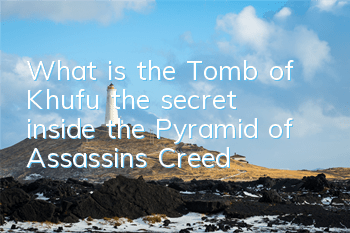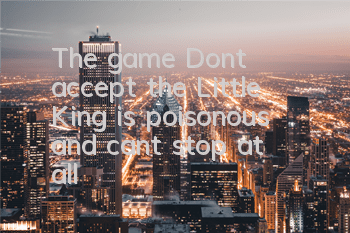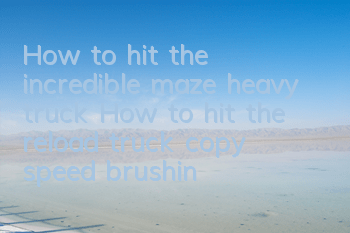Two thousand five hundred years ago, the Greeks listed the seven wonders of the world at that time: the Egyptian pyramids, the statue of Zeus of Olympus, the Sun God of Rhodes, the Babylonian Sky Garden, the Temple of Artemis, the Mausoleus of Mosoras, and the Lighthouse of Alexandria. To this day, the only one of the seven wonders is left, the Great Pyramid, which has withstood the test of thousands of years and has remained strong to this day. No wonder there is a proverb in Egypt: "Humans are afraid of time, and time is afraid of pyramids."
Napoleon: Soldiers, on the top of the pyramid, forty centuries are looking down at you
A few days ago, an international team of archaeologists from France, Japan and other countries discovered that there was a hidden space inside the pyramid, located above the large corridor passing by countless tourists every day. Archaeologists carefully call it "space" and are unwilling to rashly characterize it as a secret room or a tomb room.
Before this international team announced their research results to the world, you can actually explore the "huge space" in a game, which is "Assassin's Creed: Origin". Ubisoft conducted a lot of research and research when producing Assassin's Creed: Origins. After consideration, they decided to adopt the theory of French archaeologist Jean-Pierre Houdin. Wudan believes that the pyramid actually uses the internal spiral slope construction method, which will inevitably leave two spare rooms on the upper part of the pyramid in the end.
Wudan believes that the construction of the pyramid is to first use the slope method to build the base, and then dig a corridor on the base to transport the building materials to build the remaining part
Ubisoft decided to adopt Udan's theory and left a gap on the wall at the king's tomb when building the pyramid of Khufu in Assassin's Creed: Origins, which leads to the two rooms pointed out by Udan. The location of these two rooms is exactly similar to the "space" detected by archaeologists this time.
What secrets are there in the pyramid have always been the source of inspiration for game creators. The pyramid has appeared in countless games, and countless game designers have also let their imaginations go freely about the question of "What secrets are there in the pyramid". This time, Ubisoft took the lead and they "prophecied" reality in the game. So are there any other games that can tell us the secrets in the pyramid?
The large-scale tourist game "Assassin's Creed: Origin"
Is there any gold, silver and treasures in the pyramid?
"The gold, silver and treasures collected by Pharaoh must be buried in the pyramid." I believe many people think so, and this common idea is also reflected in games and film and television works. We just need to close our eyes and use a little imagination to easily make up for this situation: after going through hardships and obstacles, the protagonist and his companion (usually a beauty) finally entered the inside of the pyramid. After a while of groping, the protagonist lit a brazier, and the flames stretched along the oil tank, and the darkness was as if it were.The curtain was slowly pulled open, and mountains of gold and silver treasures appeared in the picture. The gold was radiant under the reflection of the fire, and the priceless objects in the civilized world were piled up together like garbage...
We have seen such scenes in the Uncharted Sea series, such scenes in the Tomb Raider series, such as the National Treasure, the Indiana Jones, and the Mummy. We can even see such scenes in the latest "Assassin's Creed: Origins": gold and silver vessels inside the Khufu pyramid are dumped into the room like garbage, which makes people have no place to put them in.
Why don't you let me pick it up? ! !
Every time I experience this situation, I believe there must be such a shout echoing in the chests of all players: "Why don't you let me take it?!!" The tempting treasures are stickers, gold coins are covered with the ground but cannot be picked up. The player enters the treasure mountain but returns empty-handed. In the end, he is still so poor that he needs to find a prodigal merchant to pawn equipment to live a life, which makes people laugh and cry. But are there really mountains of treasures buried in the pyramid? In fact, archaeologists have never found traces of treasures in any pyramid. Not to mention the treasure, even the mummies of the pharaohs were not found in the pyramid.
There are many reasons for this, and one of the reasons why this situation is a bit ridiculous - tomb robbers. In the past few years, with the popularity of novels such as "Ghost Blows Out the Light" and "Grave Robbers' Chronicles", a "tomb robbery fever" was set off in mainland China, and even such a ridiculous thing happened: a few stupid and greedy people couldn't tell the difference between novels and reality, and tried to get rich overnight, and robbed the tomb of Mao Yupeng, a Qing Dynasty calligrapher, one of Fenghua cultural relics protection sites, and were finally easily captured by the people's police.
Tomb robbing is illegal, please do not imitate it.
Tomb robbery has been banned in all dynasties in China, and it can be regarded as a "profession" with a long history. Coincidentally, Egypt, as an ancient civilization, also has a history of tomb robbery for thousands of years. The pyramids were stolen as early as the ancient Egyptian period, but at least three thousand years ago. In modern times, the plunder of cultural relics by Western powers further aggravated tomb robbers. Not to mention burial objects, even mummies were dug up by tomb robbers in a daze and sold in the street, and even used as fuel.
The eighty-eight pharaohs' tombs in the Valley of the Emperors were all robbed and dug before modern times. The only well-preserved tomb is the tomb of Tutankhamun, which is famous for its "Curse of Tutankhamun". It is not because of how good the protection work of Tutankhamun’s tomb is, but because this tomb is the smallest and most shabby pharaoh’s tomb, and it is pressed behind another pharaoh’s tomb, which is lucky enough to escape the tomb robber’s hands.
In 1865, mummies were sold in the street in Egypt
In addition to the reasons for being stolen, there is another more important reason that no civilized funeral system allows gold, silver and jewelry to be like garbageBurying the ground in a tomb is not called burial, it is called treasure hiding. The burial items of various civilizations are mostly ritual instruments, daily necessities or commemorative items. The burial items are more valuable for archaeology and scientific research, rather than simply "value". The clay pots containing wine in Tutankhamun's tomb are not lower in archaeological value than the gold and silver statues in the tomb, and may even be much higher, but the value of the two in the auction house will be a huge difference.
Besides, burying a large amount of gold and silver hard currency will make these hard currency unable to circulate and eventually turn into dead money, which is equivalent to shrinking the money in disguise. This will also cause great harm to social and economic activities and is difficult to do at the practical operation level. Otherwise, wouldn’t the Egyptians have to experience deflation every time a pharaoh dies?
Tathankhamun's tomb is the only undisclosed tomb. Most of the burial objects in the tomb of Tutankhamun are utensils and some daily necessities used by the pharaohs. There are many gold and silver jewelry, but there are more bottles and jars, mainly the Pharaoh's clothes, toys and furniture, which is far from the treasures in film and television works and games. So let the fiction be fiction and the reality be reality.
The tomb of the famous pharaoh Tutankhamun, the murals in them are more precious to archaeologists than gold and silver
Perhaps the pyramid is a seal?
Without treasure, or even mummies, will the pyramid be a building that suppresses evil things? Compared to the setting where there are mountainous treasures in the pyramid, the setting where the pyramid seals evil things from ancient times is more common in games and movies. A certain evil god was sealed in the pyramid by his ancestors. Modern people accidentally entered it and opened the seal. The evil god was released to destroy the world, and was finally defeated by the protagonist and his group... This is also a familiar plot for players.
White Snake is under the Leifeng Pagoda, what is under the pyramid?
Is there even a possibility that under the pyramids are indeed suppressing something that the ancient Egyptians consider to be "evil things"? These things may not have supernatural attributes, but the ancient Egyptians, who were limited by their cognitive level, mistakenly thought it was an evil object and sealed it under the pyramid? But the possibility of this situation is actually smaller than the treasure hidden in the pyramid. Why do you say that? It starts with the architectural structure and materials of the pyramid.
For the ancients, sealing was a ritual, requiring the construction of necessary supporting buildings, which required space. This is why there is an extremely huge internal space inside or below the pyramid in the settings of many games and movies. In the opening plot of "X-Men: Apocalypse", the bottom of the pyramid was even hollowed out in its entirety, leaving only a small number of load-bearing stone pillars.
In "X-Men: Apocalypse", the bottom of the pyramid was completely hollowed out, and a hall inside was also taken out.
But this is actually impossible. Take the Khufu Pyramid as an example. The Khufu Pyramid has used a total of 2.3 million yuan.The average total amount of boulders is 2.5 tons and the total weight is about 6.84 million tons, while the 6.84 million tons of behemoth is pressed on 5 hectares of land. If it is a modern building, hundreds of load-bearing columns need to be laid on the foundation. Ancient Egypt did not have this technology. Fortunately, the architects of the Khufu Pyramid found a Feng Shui treasure land - the Khufu Pyramid is directly located on a whole rocky hill. Today, the desert around the Khufu Pyramid is actually caused by the accumulation of acquired wind sand.
Even with unique geological conditions, the pyramid still settled 8-9 meters after thousands of years. Although there is a natural foundation, if a huge space is dug out under the pyramid, then collapse will be a matter of minutes. How could ancient Egyptian architects dare to break ground underground in the pyramids?
If the span of the stone is too large, it will break itself, so there are many building pillars in the Romans
In addition to load-bearing factors, the material of the pyramid also determines that its internal space is limited. The pyramid is almost 100% built with stone, and the stone is bonded with covalent bonds at the microscopic. The characteristics of this material are very obvious, with high hardness, pressure resistance, load-bearing, but very brittle. If stone is used as a ceiling, the stone will break itself if the span is too large, which will cause the stone to be used as a beam. Therefore, the Romans and Greeks who also used a lot of stone needed to use a large number of load-bearing columns even inside the building, so we could not see the "huge space", but all we saw were columns.
To be more, the reason why modern buildings can have large span space is because a large amount of reinforced concrete materials are used. Concrete is equivalent to artificial stone and is used to bear loads, while the steel bars in it are responsible for dealing with tensile stress and providing "toughness". Therefore, even if there are cracks in the concrete, it will not affect the use, because as long as the steel bars are constantly in progress, there will be no problems.
Reinforced concrete is to use steel bars to make up for the problem of insufficient concrete toughness
In fact, compared to its majestic appearance, the inner space of the pyramid is actually very small, almost a solid stone building. The pyramid is built with a corridor to the royal family, the queen's room and the underground chamber, and the actual space utilization rate is very low. The large corridor and royal family of Khufu pyramid are now open to tourists and can be visited in less than half an hour. The interior is empty, with only one sarcophagus. Compared with the endless imagination of literary and artistic film and television games about the mystery of the pyramid, the actual situation inside the pyramid is so sorry.
The inside of the pyramid is almost solid, and there is indeed no extra space to seal anything
Maybe there is the curse of the pharaoh?
There are many legends about the mysterious pyramids. One of the most widely spread and difficult to falsified is the "Pharaoh's Curse". Legend has it that Pharaoh curses all those who disturb him from sleeping. This legend has a wide range of spread, and many literary works have used this as inspiration, which also led to further curse legends.spread. Many tourists even don’t want to visit the pyramid because of this, and only take pictures outside for souvenirs.
I believe everyone is familiar with this story: it is said that there is such an inscription in the tomb of Tutankhamun, "Who disturbed the Pharaoh's sleep? Death will spread its wings and descend on his head." Then several people who first entered the tomb died unexpectedly, and Tutankhamun's curse spread wildly, so Tutankhamun became the most famous pharaoh in the world.
Speaking of this Tutankhamun, most people's first reaction is probably a curse.
The Pharaoh's curse and legends such as "the fruit inside the pyramid will not rot and the knife will not rust", "water is left in the pyramid structure for a period of time and can be used to wash your face to beautify your skin", "The mass of the pyramid multiplied by 1050 is equal to the mass of the earth" are intertwined, adding to the mystery of the pyramid.
In fact, rumors like pyramids have long been falsified, and ordinary people can easily prove that these legends are pure rumors at home. As for the proportional relationship between the pyramids and the earth, there are more than 100 pyramids of all sizes in Egypt. Wouldn’t there be more than 100 proportions? As for the pharaoh's curse, it may be just a gimmick rendered by the media.
As mentioned before, although Tutankhamun is famous in modern society, he may be the most cowardly pharaoh in history. He succeeded to the throne at a young age, and was less than 20 years old when he died. When he was alive, the state power was always in the hands of powerful officials. He died inexplicably when he was almost at the age of being able to formally rule. After his death, Prime Minister Ai, who actually held state power, succeeded to the throne to become a pharaoh, which not only makes people doubt the cause of his death. There are almost no official records of this pharaoh in history.
Compared with the fame of modern society, Tutankhamun was not a very powerful pharaoh at that time
His burial was also very hasty. His tomb was originally the tomb of a minister. After Tutankhamun died, he was urgently used to make do with it. His tomb was not stolen, not because the protection was so perfect, but because it was too simple and the target was too small and it was not discovered. Outside him, hundreds of tombs of Egyptian pharaohs who were more grand and luxurious than him were all robbed, and the accidents were silenced.
The curse of the Pharaoh is actually just a gimmick deliberately rendered by the media in order to make a big news. As early as 1933, German Egyptologist Professor George Standolph had specifically refuted the rumors about every legend about the curse of the Pharaoh at that time. After listing a large number of facts, he made a clear conclusion: "The Curse of the Pharaoh" does not exist, and there is no ancient inscription of the so-called "curse" in the tomb.
Rather than saying that there is a curse, it is better to say that the "virus/mold cause disease theory" proposed by the doctor is more reliable. But it may be more of a psychological effect. The deaths of some archaeologists involved in the opening of the tomb are accidents, but those who believe in the legend of "cursing" wear tinted glasses to see these accidents, and the so-called accidents become "cursings". Add media rendering and textThe further fanning of artistic works and the word of mouth spreads rumors. The rumors were told ten thousand times, and the curse came true.
If there were really curses, so many tombs of the Pharaohs in the Valley of Kings would not have been stolen
In fact, the pyramid itself is the biggest secret
What secret is hidden in the pyramid? Maybe a game has already told us. This game is not an action-adventure RPG game that allows you to swim in the pyramids, but a strategy game, which is Civilization. In the Five and Sixth Cultivational Civilizations, the special effects of the Great Pyramid Wonders are given to the players' workers and provide construction improvements. "Civilization" is actually telling us that the biggest secret of the pyramid is itself, and the biggest secret of the ancient Egyptians' ability to build pyramids.
The Pyramid in Civilization 6
The technology required to build a pyramid may not be brilliant from a modern perspective, but the silent pyramid is the best display of the ancient Egyptian organization, management, mobilization and administration capabilities. The ancient Greek historian Herodotus once described the construction of the pyramid in his book: "Every hundred thousand slaves are divided into groups, each group takes three months in turn, which takes twenty years." There is an exaggeration in this. Modern archaeological research believes that the Khufu pyramid mobilized about 30,000 manpower and took ten years to build.
The new subversive archaeological discoveries tell us that the truth of history is far from that simple. After investigating and studying the cemetery of the pyramid builders who were accidentally discovered one kilometer away from the pyramid, archaeologists were surprised to find that the builders of the pyramid were not slaves, nor were they forced to recruit free civilians, but a group of free people who received wages. Among them are workers who specialize in the construction industry, and farmers who come to work during the slack season; there are men and women in terms of gender, and many even formed families while participating in the pyramid construction to raise the next generation.
Previously people thought that the pyramid was built by slaves, but in fact the workers were all free people
According to the content of the excavated stone slab, the Pharaoh took on all the food, clothing, housing and transportation for the workers. The workers were not only able to receive food and wages, but also received good medical services when they were injured and sick, and even took leave without working for the reason of "hangover". This is obviously a bit unimaginable for China, because since ancient times, the feudal dynasty in our country have had a tradition of collecting corvee labor. The rulers not only forced the farmers to work for them without compensation, but also often asked the civilians to bring their own food.
The corvee service in China's feudal dynasty has always been numerous and strict, and the people have suffered greatly. For ancient Chinese rulers, since they could use free labor, why should they spend money to hire workers? If every levyed civilian paid a reasonable salary, the treasury may not be able to support it.
From Du Fu's Chinese painting "The Soldiers and Cars", military labor service is also a kind of labor service, and the people suffer a lot
Ten thousand left agricultureAlthough it sounds difficult for full-time workers to pay wages, provide food, clothing, housing, transportation and medical insurance, it may sound difficult, but it may not be possible if you devote your country's efforts. Qin Shihuang also recruited hundreds of thousands of "public servants" and "criminals" to complete large-scale national projects. But please don't forget another key factor - time.
The pyramid is so old that many people have lost their concept of its age and only know it is "ancient". Sometimes, it is more intuitive to compare: when the first pyramid was started, Huangdi and Yandi had not yet started a war with Chiyou; when the Khufu pyramid was completed, the Chinese civilization was still in the Yangshao and Longshan culture periods of the Neolithic Age; when we were still using stone tools, the ancient Egyptians had already completed the magnificent and majestic pyramids, and at that time, Greece, the source of Western civilization, was still playing with mud in the ground.
The pyramid is indeed a miracle
In such a long time, when the fire of other civilizations was still a few sparks, and when humans in other places were still fighting against the world for survival, the ancient Egyptians could accomplish such a great cause. This is the secret told by the pyramid, and its existence itself is the biggest secret. But the ancient Egyptian civilization, which was once so glorious, was completely destroyed in history. Even their hieroglyphs have been lost for thousands of years, and it was only after accidentally discovered that the Rosetta stone tablet was cracked by chance. It makes people feel the ruthlessness of time, the insignificance of mankind, and the difficulty of inheriting Chinese civilization. In another four thousand and five hundred years, the Khufu pyramid may still stand, and where will humans go?









